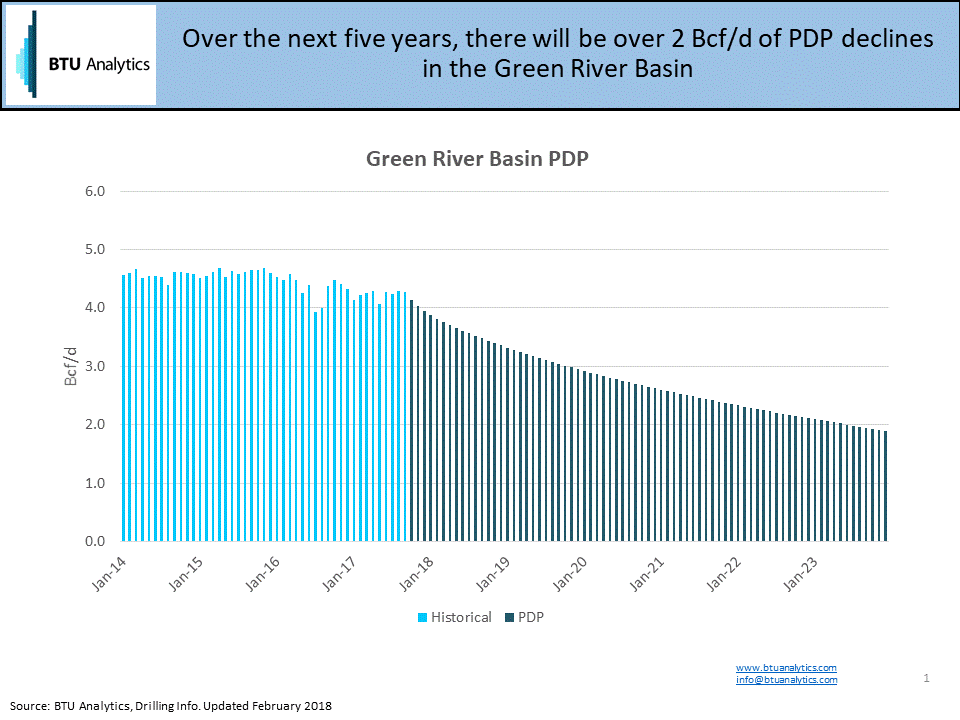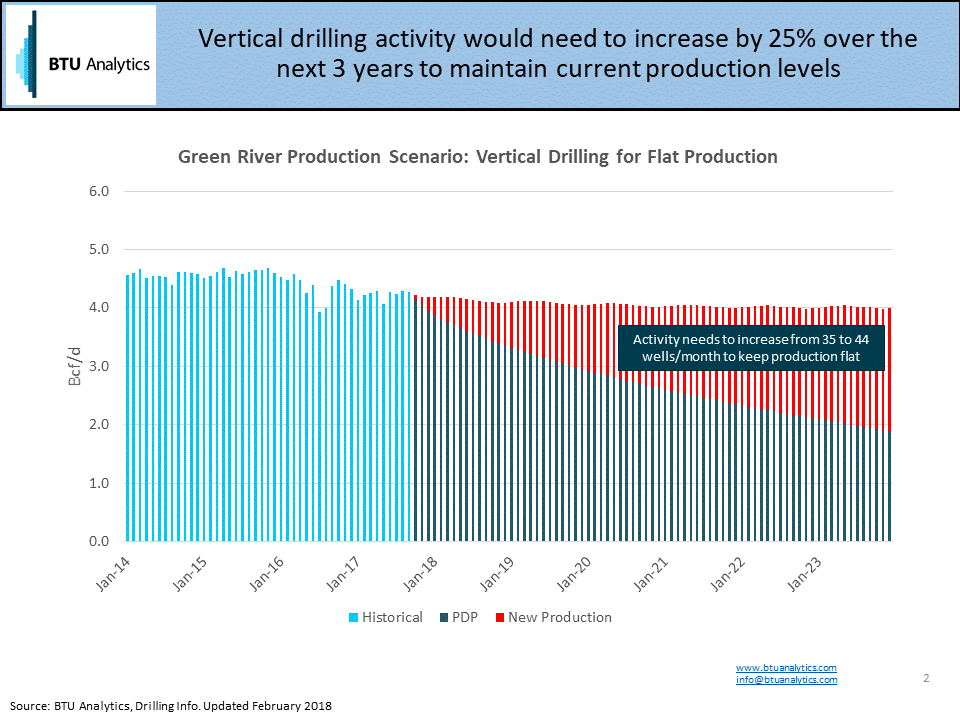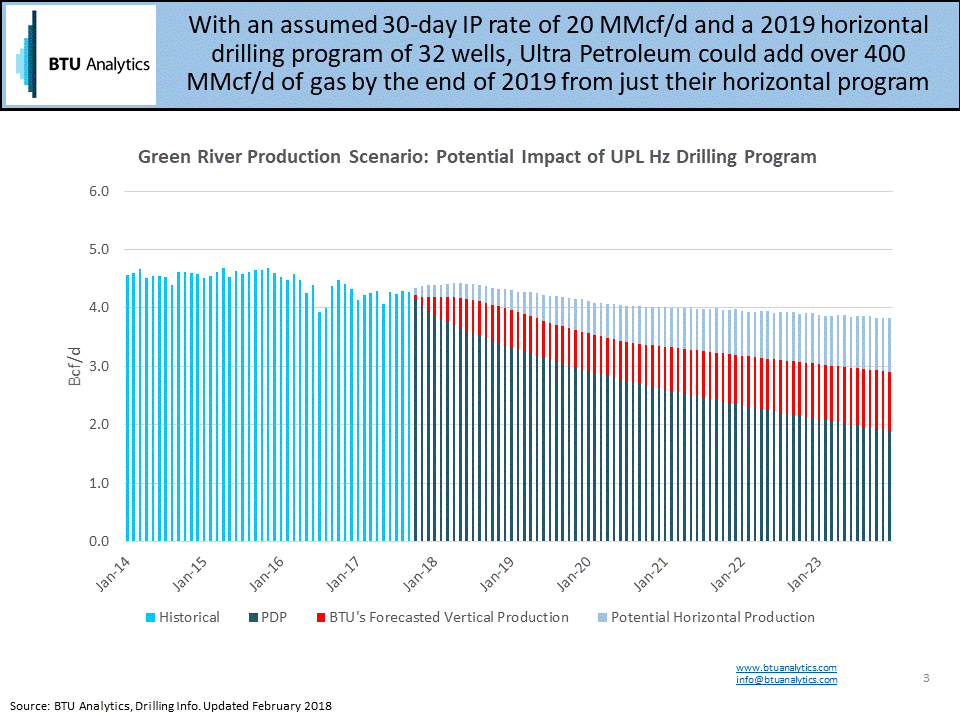If you have been following BTU Analytics’ production analysis over the past year, you are aware that one of the major themes we’ve been analyzing is the expected inability of growing production from Appalachia and the Permian to get to growing demand in the Gulf Coast over the next 18 months. Because this gas can’t move to its preferred markets in the Gulf Coast, it is displacing and in some cases flowing back towards the Rockies. Although growth in the DJ Basin has been strong, gas declines for many of the other plays across the Rockies have relieved some pressure on an increasingly constrained gas market in the West. However, with Ultra Petroleum (NASDAQ: UPL) gearing up for a horizontal drilling program in the Green River Basin this year, continued declines in this play will no longer be a sure thing.
Natural gas production in the Green River Basin has declined from a 2015 average of 4.6 Bcf/d to around 4.2 Bcf/d for 2017. Simply holding activity flat at today’s levels going forward would result in further declines of 120 to 150 MMcf/d each year. To set a baseline for how new production from horizontal or vertical activity plays contributes to overall production in the Green River Basin let’s first take a look at PDP declines.

PDP declines represent the natural decline from current wells already online. If no new wells were drilled in the basin, production would drop nearly 2 Bcf/d over the next five years.
With a couple of companies actively investing in the Green River, it’s clear that there will be new production to offset this natural decline, but how that investment capital is allocated could have a large impact on the basin and the surrounding market. BTU’s base case currently forecasts vertical well activity falling through 2018 and 2019 based on increased pressure on basis in the Rockies as Permian gas production continues to grow.
Historically, the primary driver of production in the Green River basin has been vertical wells. However, to keep the production profile in the basin flat through vertical drilling, activity would need to increase steadily from the 2017 average of 35 wells per month to 44 wells per month by 2020. This amount of vertical drilling activity was last seen in 2014.

Ultra’s recent announcement of strong horizontal well results and a move to implement a dedicated horizontal program going forward is an interesting potential pivot for the Green River Basin. Ultra expects to add 15-20 horizontal wells in 2018, and 30-36 wells in 2019. Additionally, the potential horizontal 30-day IP rates given in their earnings presentation exceed 20 MMcf/d. If Ultra is able to follow through with this plan, just how much additional natural gas would the bring to market?
The scenario below uses BTU’s vertical drilling forecast as the baseline and looks at new potential production from horizontal wells assuming Ultra Petroleum’s announced drilling plan. Any increases to horizontal activity by other operators in the play would be an additional upside to production. Annual well counts of 20 wells and 32 wells for 2018 and 2019, respectively, were used. The 2019 activity values were carried forward through the remainder of the model period. This scenario assumes 30-day gas IP rates of 20 MMcf/d.

With over 0.4 Bcf/d of potential natural gas increases in the next two years from Ultra Petroleum’s horizontal drilling plan, the Green River Basin should see its overall production decline slow and, depending on where vertical activity falls, possibly move towards a flatter production profile. And if other producers follow suit, the days of Green River production declines could be over. For more information on BTU’s natural gas production views, request a sample of the US Upstream Outlook Report.









